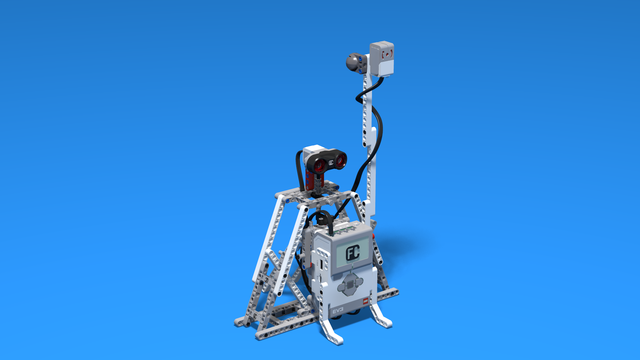In some cases we may want to use the switch block as a simple if-clause: execute the given action only if the condition is met, otherwise do nothing. Other times you may have some nested switch blocks that make the program too big to be shown on one screen. In both cases using tabbed view may be handy.

To access the full video please subscribe to FLLCasts.com
- #928
- 26 Sep 2018
So far we have covered switch blocks that have a block(s) in both their true and their false case. This use of the block is called if-else operator.
 When there are blocks in just one of the cases, we say that it is an if-operator:
When there are blocks in just one of the cases, we say that it is an if-operator:

In both cases the switch block is in Flat View. However, when the block is used as an if-operator, it is useful to use the Tabbed View of the block:

You can change the view of the block from the upper left corner as shown bellow:
Of course, you can use Tabbed view for if-else operator too:
Courses and lessons with this Tutorial
This Tutorial is used in the following courses and lessons

Instructors Remote Training
If you are working with students and you want to introduce Robotics to your class or you want to mentor a FLL team, but you are insecure about your technical knowledge in the Robotics field, then this is the right place for you. Having in mind teachers' busy schedule, we have design two different schedules and added an option to design one just for you. FLLCasts's Mindstorms EV3 Robotics Online Training is the perfect match for any teacher.
After the completion of each task the participant has to upload his solution for verification.
- 136
- 280:11
- 156

Switch
Today we will focus on another block which will allow our robots to make decisions. This block is in the Flow Control palette and is called “Switch”.
- 7
- 0
- 7
- 3d_rotation 1

Robotics with LEGO - Level 3.0 - Security systems
This is the fifth level of the Robotics with LEGO curriculum for students in fifth to twelfth grades.
In this level students will learn how to work with data measured by the sensors. The concept of Algorithm is introduced and the programs perform calculations without knowing the values beforehand. The programming blocks transfer data between each other via data wires. The robots are designed to address the problems of security systems. Variety of alarm systems are built and the physical principles of different security methods are considered.
- 50
- 1:03
- 213

Lesson 7 - Card reader
Introduction
This morning the cake robbers escaped from prison. In order to evade the security system we created, they joined forces with bank robbers who have just been caught thanks to a secret vault door alarm installed in the last bank they attempted to rob. Now, the two gangs are trying to rob all of the bank’s ATMs. It’s time to stop them!

- 6
- 7
- 8
- 3d_rotation 1